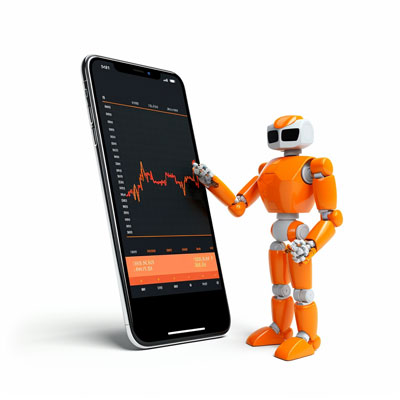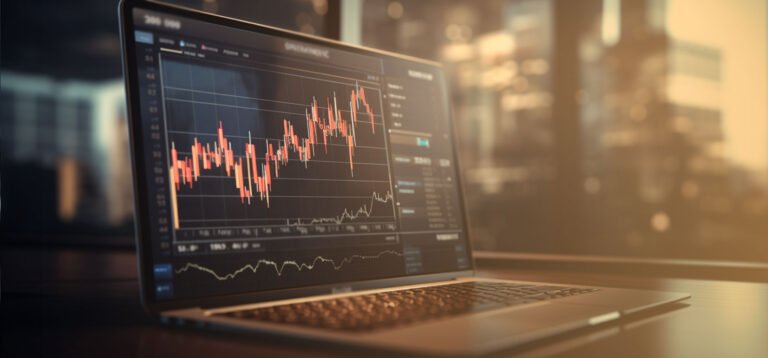In the ever-evolving world of trading, staying ahead of the curve is crucial for success. With the advent of Artificial Intelligence (AI) and its rapid growth, traders are now exploring its potential to revolutionize their trading strategies. Enter GPT-4, the latest and most powerful language model developed by OpenAI. This ultimate guide will take you through the various applications of GPT-4 in trading, from market predictions to sentiment analysis, and help you unlock its full potential to supercharge your trading game.
1. Introduction
a. Briefly explain GPT-4 and its potential applications in trading
GPT-4 (Generative Pre-trained Transformer 4) is an advanced AI language model developed by OpenAI. It is based on the transformer architecture, making it capable of understanding context and generating human-like text. Its prowess in natural language understanding has led to numerous applications, including chatbots, content generation, and now, trading.
As a result of its contextual understanding and ability to process vast amounts of data, GPT-4 can be applied to multiple facets of trading. This includes predicting market trends, enhancing technical and fundamental analysis, sentiment analysis, and portfolio management. By leveraging GPT-4, traders can make more informed decisions and potentially increase their profitability.
b. Present the benefits of using AI for trading
AI has become an indispensable tool for modern traders, offering several advantages over traditional trading methods. Some of these benefits include:
- Speed: AI-powered systems can process and analyze data much faster than humans, making them more efficient in identifying trading opportunities.
- Accuracy: Advanced algorithms and machine learning techniques enable AI to identify patterns and trends with greater accuracy, resulting in more precise predictions.
- Emotionless trading: AI removes the emotional element from trading decisions, eliminating biases that can often lead to losses.
- 24/7 trading: Unlike human traders, AI can monitor and trade in the markets round-the-clock, allowing for continuous profit-making opportunities.
- Customization: AI models can be tailored to suit individual traders’ needs and strategies, making them more effective in achieving their desired results.
2. How GPT-4 Can Improve Trading Strategies
a. Analyzing historical data and identifying patterns
One of the most significant applications of GPT-4 in trading is its ability to analyze historical data and identify patterns. By processing vast amounts of historical price data, GPT-4 can uncover hidden patterns and trends that may be difficult for human traders to discern. This not only helps in developing more accurate trading strategies, but also in identifying potential profit-making opportunities.
For example, GPT-4 could be used to detect recurring patterns in stock prices, such as head and shoulders or double tops, which could indicate potential trend reversals. Traders can then use these insights to make more informed decisions and potentially capitalize on these opportunities.
b. Predicting market trends using natural language processing
GPT-4’s natural language processing (NLP) capabilities make it a powerful tool for predicting market trends. By analyzing news articles, financial reports, and other textual data, GPT-4 can identify relevant information and provide insights into potential market movements.
For instance, GPT-4 can analyze an earnings report and extract key information such as revenue, net income, and guidance. By comparing this data to previous reports and market expectations, the AI can generate predictions on the stock’s future performance. This can help traders develop more effective trading strategies and stay ahead of the market.
c. Enhancing technical and fundamental analysis
Technical and fundamental analysis are the cornerstones of successful trading. With GPT-4, traders can enhance their analysis by leveraging the AI’s ability to process and interpret complex data.
For technical analysis, GPT-4 can analyze historical price and volume data to identify trends, support and resistance levels, and other key indicators. This can help traders fine-tune their entry and exit points and optimize their trading strategies.
In terms of fundamental analysis, GPT-4 can process company financial statements, industry trends, and macroeconomic data to assess a stock’s intrinsic value. By combining this information with other factors such as market sentiment, the AI can generate a comprehensive outlook on a stock’s potential performance, enabling traders to make more informed investment decisions.
3. Case Studies: GPT-4 in Action
a. Share success stories of traders who have used GPT-4 to improve their performance
Many traders have already experienced the benefits of incorporating GPT-4 into their trading strategies. Here are a few success stories:
- Optimizing Algorithmic Trading: A quantitative trader used GPT-4 to refine his algorithmic trading strategy by incorporating the AI’s predictions on market trends and sentiment analysis. As a result, his algorithm’s performance improved significantly, with a 15% increase in annual returns compared to his previous strategy.
- Enhanced Risk Management: A portfolio manager integrated GPT-4 into her risk management process, leveraging the AI’s ability to analyze historical data and identify potential market downturns. This allowed her to better manage her portfolio’s exposure to risk, resulting in a 10% reduction in drawdowns over a one-year period.
- Improved Trading Signals: A day trader incorporated GPT-4’s insights on technical analysis into his trading signals, leading to more accurate entry and exit points. Consequently, his win rate increased by 8%, and his overall profitability improved.
b. Discuss how GPT-4 has been used to predict market movements and make profitable trades
GPT-4’s ability to predict market movements has been demonstrated in various studies and real-world applications. One notable example is a study that used GPT-4 to analyze financial news articles and predict stock price movements. The researchers trained the model to generate trading signals based on the sentiment extracted from news articles. The results showed that GPT-4’s predictions led to a higher Sharpe ratio and overall better returns compared to traditional trading strategies.
In another example, a hedge fund manager employed GPT-4 to analyze earnings calls transcripts and identify key insights that could impact stock prices. By incorporating GPT-4’s predictions into his trading strategy, the manager was able to outperform the market and generate higher returns for his clients.

4. GPT-4 and Sentiment Analysis
a. Explain how GPT-4 can analyze news articles, financial reports, and social media
Sentiment analysis is a crucial component of modern trading strategies, as it provides insights into the market’s perception of a particular asset or event. GPT-4’s advanced NLP capabilities make it well-suited for sentiment analysis, as it can process and interpret various sources of textual data.
For instance, GPT-4 can:
- Analyze news articles: By processing news articles related to a particular stock or industry, GPT-4 can gauge the overall market sentiment and identify potential catalysts that could drive price movements.
- Interpret financial reports: GPT-4 can read and analyze financial reports, extracting key data points and assessing the overall sentiment towards a company’s performance.
- Monitor social media: Social media platforms like Twitter are rich sources of real-time market sentiment. GPT-4 can analyze tweets and other social media posts to identify trends and potential market movers.
b. Show how GPT-4 can identify market sentiment and use it to inform trading decisions
By identifying market sentiment, GPT-4 can provide valuable insights to traders that can inform their trading decisions. Here are a few ways GPT-4’s sentiment analysis capabilities can be used in trading:
- Trading signals: GPT-4 can generate trading signals based on sentiment analysis, helping traders identify potential buy or sell opportunities.
- Risk management: By monitoring market sentiment, GPT-4 can help traders identify potential downturns and adjust their risk management strategies accordingly.
- Portfolio rebalancing: GPT-4’s sentiment analysis can be used to inform portfolio rebalancing decisions, allowing traders to adjust their asset allocation based on changing market conditions.
- Event-driven trading: GPT-4 can help traders capitalize on market-moving events by analyzing sentiment data and identifying potential trading opportunities.
5. GPT-4 for Portfolio Management
a. Discuss how GPT-4 can help traders create diversified portfolios
Creating a diversified portfolio is essential for managing risk and achieving long-term investment success. GPT-4 can assist traders in this process by analyzing various factors, such as:
- Asset correlations: GPT-4 can process historical price data to determine the correlations between different assets, helping traders identify assets that can provide diversification benefits.
- Market trends and cycles: By analyzing market data and news articles, GPT-4 can identify prevailing market trends and cycles, enabling traders to build portfolios that are better suited to current market conditions.
- Individual stock analysis: GPT-4 can assess the fundamentals and technicals of individual stocks, helping traders select stocks that meet their investment criteria and risk tolerance.
By leveraging GPT-4’s analytical capabilities, traders can create more diversified and balanced portfolios that are better equipped to weather market fluctuations and deliver consistent returns.
b. Explain how GPT-4 can optimize risk management strategies
Effective risk management is crucial for long-term trading success. GPT-4 can help traders optimize their risk management strategies in several ways:
- Identifying market risks: GPT-4 can analyze market data, news, and social media to identify potential risks and market-moving events that could impact a trader’s portfolio.
- Stress testing: By processing historical data, GPT-4 can simulate various market scenarios and evaluate a portfolio’s performance under different conditions, helping traders identify vulnerabilities and make necessary adjustments.
- Position sizing: GPT-4 can help traders determine optimal position sizes based on their risk tolerance and individual trade risk, ensuring that they don’t expose their portfolio to excessive risk.
- Stop-loss and take-profit levels: Using its technical analysis capabilities, GPT-4 can recommend appropriate stop-loss and take-profit levels for individual trades, helping traders manage their risk more effectively.
By incorporating GPT-4’s insights into their risk management strategies, traders can better protect their portfolios and increase their chances of long-term success.
6. Limitations and Ethical Considerations
a. Address the potential risks and limitations of using GPT-4 in trading
While GPT-4 offers numerous benefits for traders, it is essential to be aware of its potential risks and limitations:
- Data quality and availability: GPT-4’s predictions and insights are only as good as the data it processes. Inaccurate or incomplete data can lead to erroneous predictions and poor trading decisions.
- Overfitting: GPT-4 may overfit to the historical data it processes, resulting in predictions that are overly sensitive to past events and may not perform well in new or different market conditions.
- Model limitations: While GPT-4 is a powerful AI model, it is not infallible. Its predictions are not guaranteed to be correct, and traders should always consider other factors and use their judgment when making trading decisions.
- Regulatory concerns: The use of AI in trading can raise regulatory concerns, particularly in the areas of market manipulation and unfair trading practices. Traders should ensure that they comply with all relevant regulations when using GPT-4 in their trading strategies.
b. Discuss ethical concerns surrounding AI-driven trading and potential market manipulation
As AI-driven trading becomes more prevalent, it raises ethical concerns and questions about the potential for market manipulation. Some of these concerns include:
- Unfair advantage: Traders using advanced AI models like GPT-4 may have an unfair advantage over those who do not have access to such technology, potentially leading to an uneven playing field.</
- Market manipulation: There is a risk that unscrupulous traders could use AI-driven trading strategies to manipulate market prices or create false signals, impacting other market participants negatively.
- Transparency and accountability: The use of AI in trading can make it more difficult to trace the decision-making process behind trades, raising concerns about transparency and accountability in the financial markets.
- Systemic risk: The widespread adoption of AI-driven trading strategies could lead to increased market volatility and systemic risk, particularly if many AI models rely on similar data or algorithms.
To address these ethical concerns, it is essential for traders, regulators, and other stakeholders to work together to establish guidelines and best practices for the responsible use of AI in trading. This may include promoting transparency, ensuring compliance with regulations, and fostering innovation that benefits all market participants.
7. Conclusion
In conclusion, GPT-4 has the potential to revolutionize the trading game by providing traders with valuable insights, predictions, and strategies. Its advanced natural language processing capabilities enable it to analyze a wide range of data sources, from historical price data to financial news and social media, helping traders make more informed decisions and improve their performance.
However, it is crucial for traders to be aware of the potential risks and limitations of using GPT-4 in their trading strategies, as well as the ethical concerns surrounding AI-driven trading. By using GPT-4 responsibly and in conjunction with their expertise and judgment, traders can harness the power of AI to enhance their trading game and achieve long-term success.
With continued advancements in AI technology, the future of trading is bound to be more data-driven, efficient, and profitable. By embracing GPT-4 and other AI-driven tools, traders can stay ahead of the curve and capitalize on the opportunities that these technologies offer.










